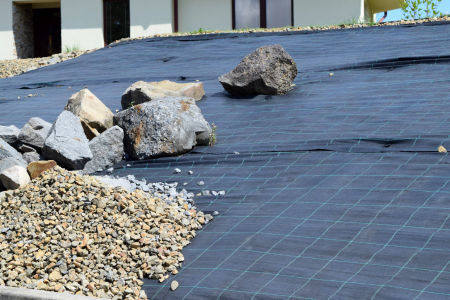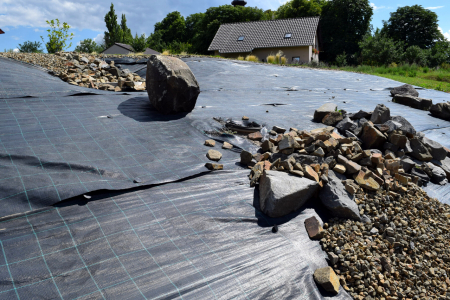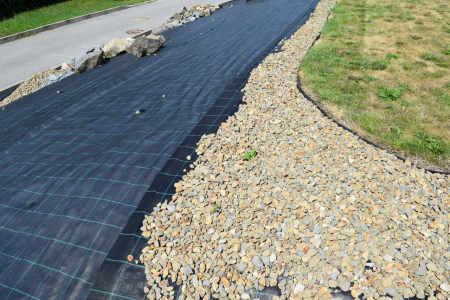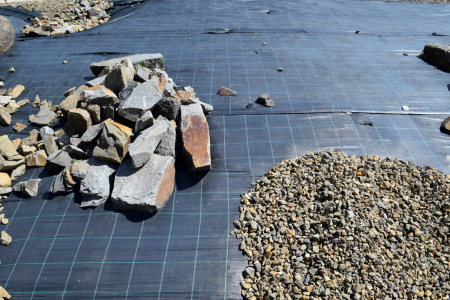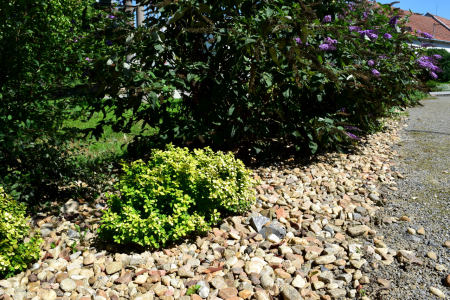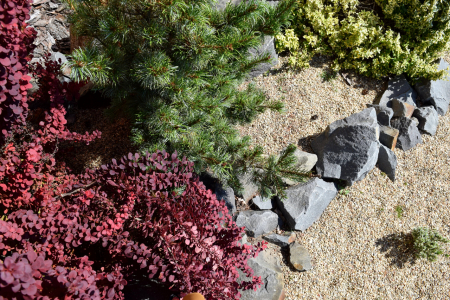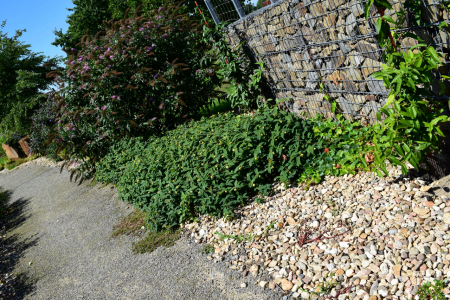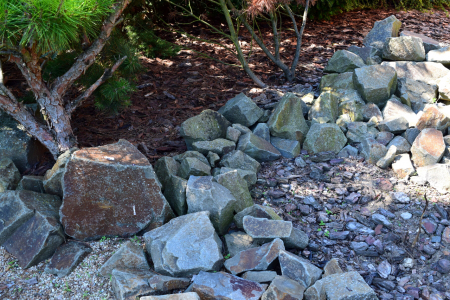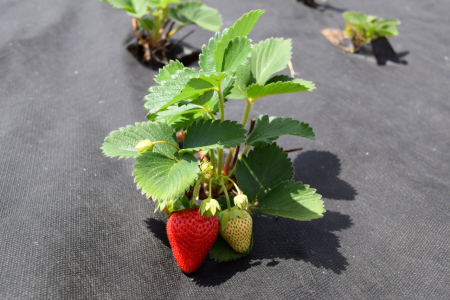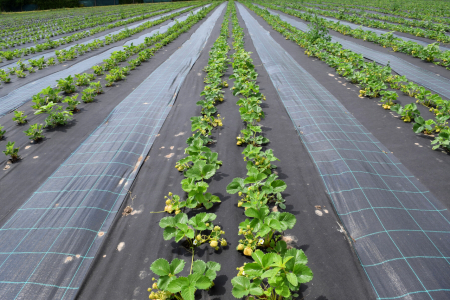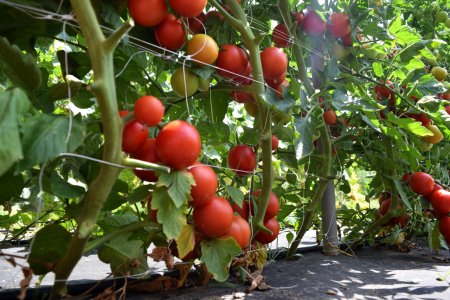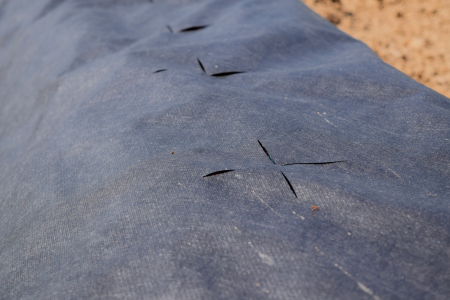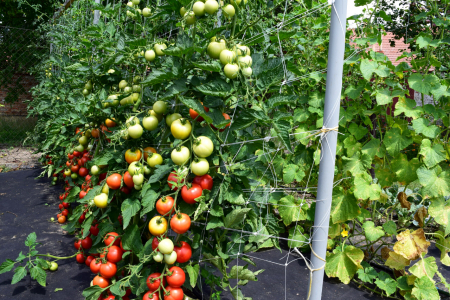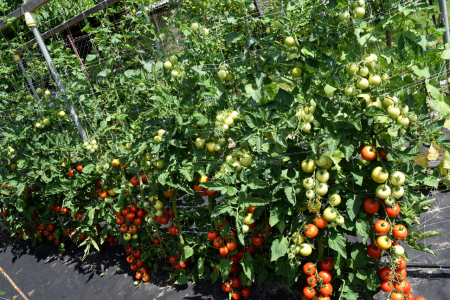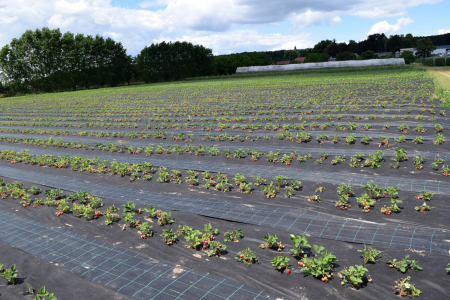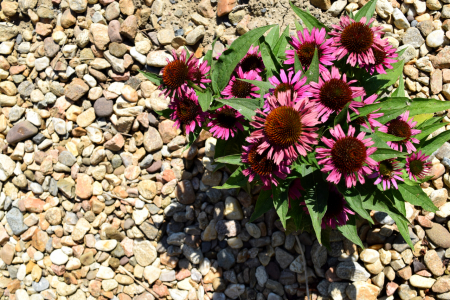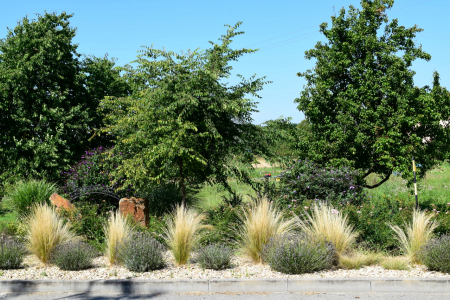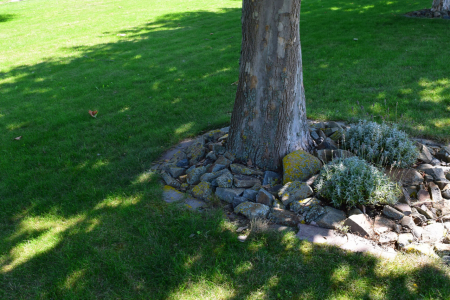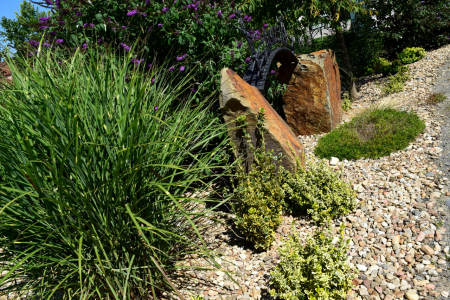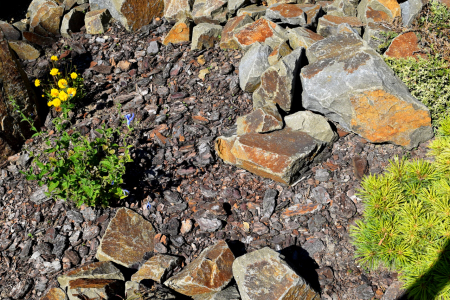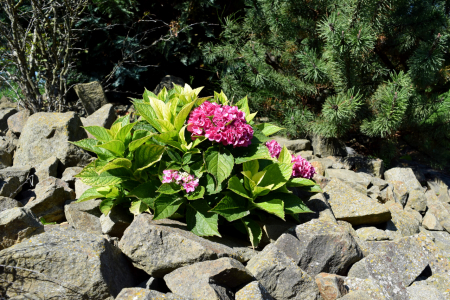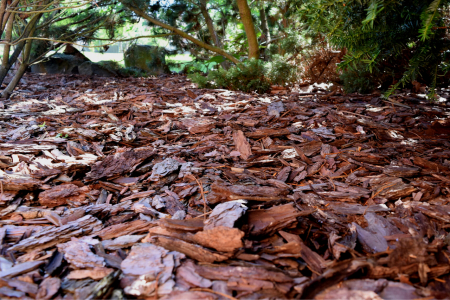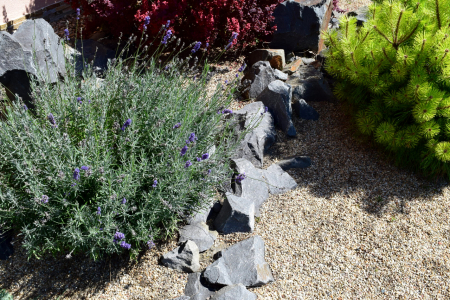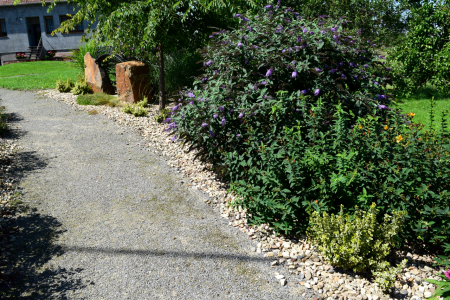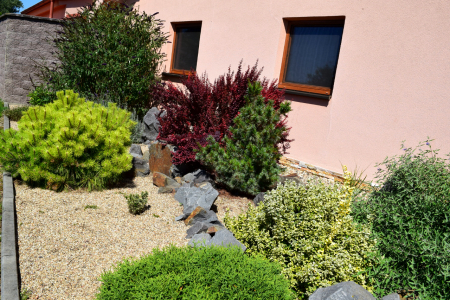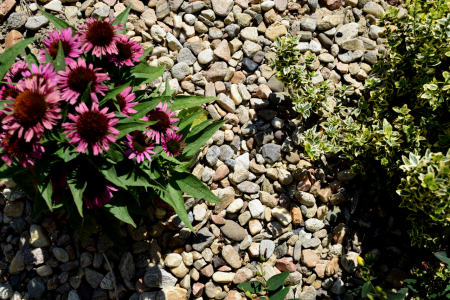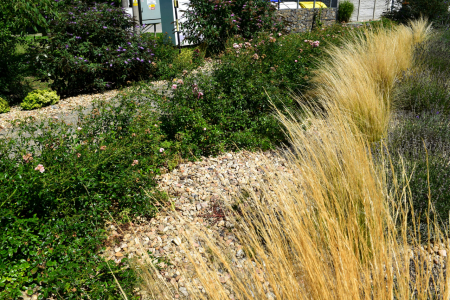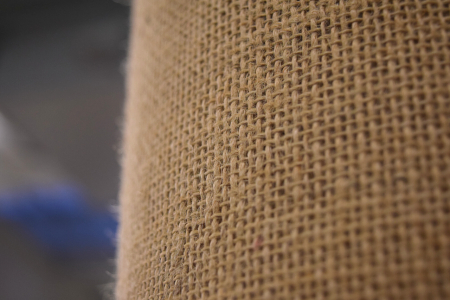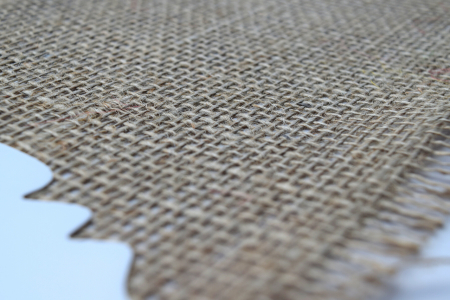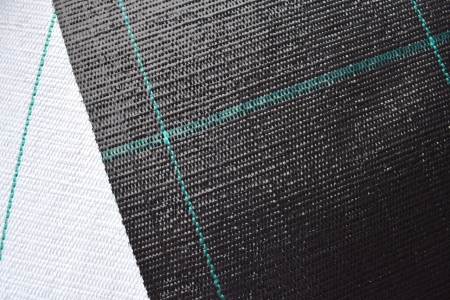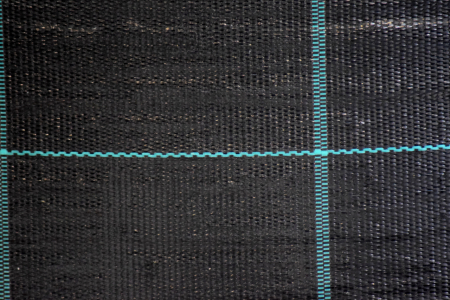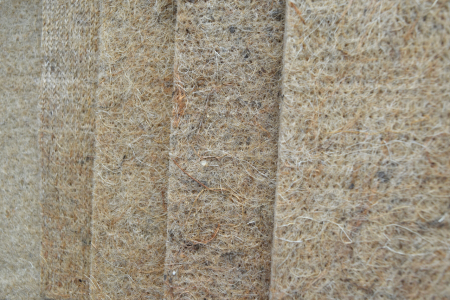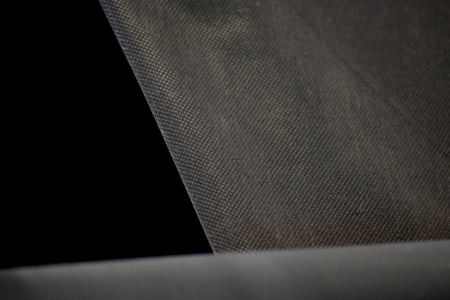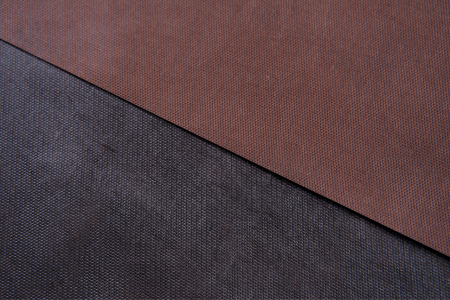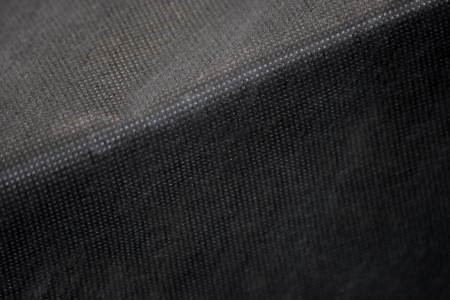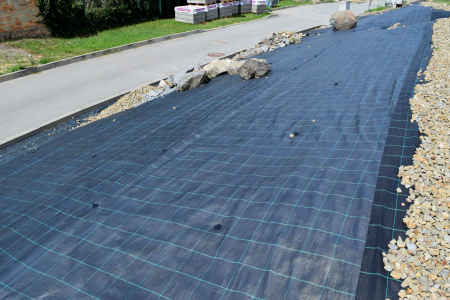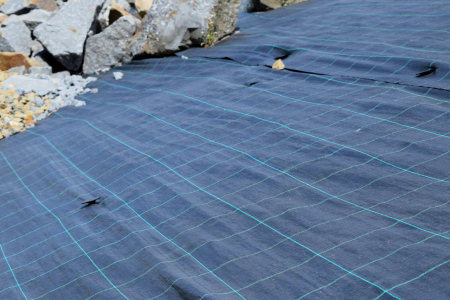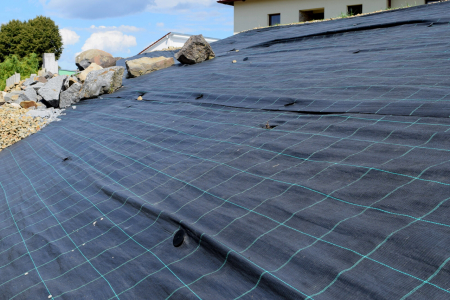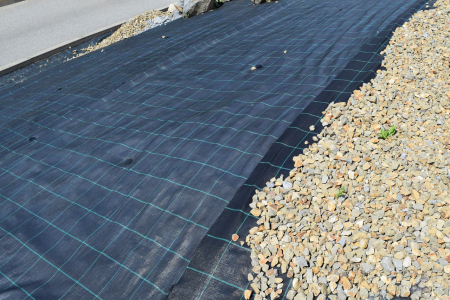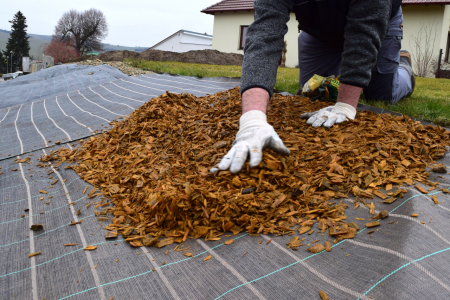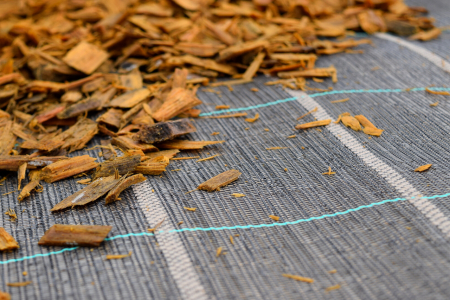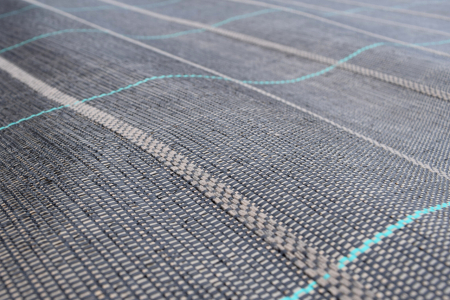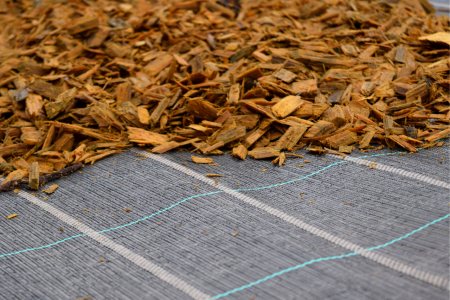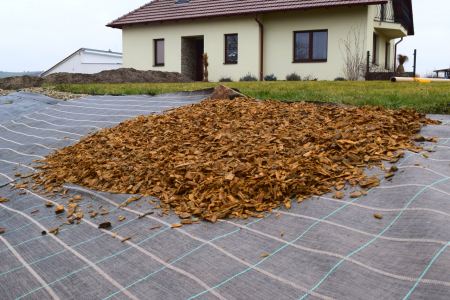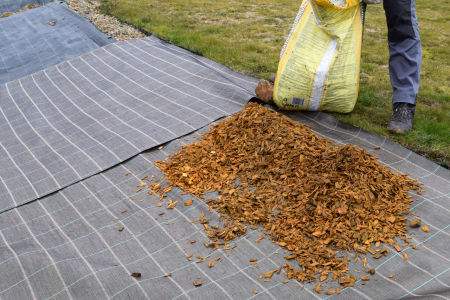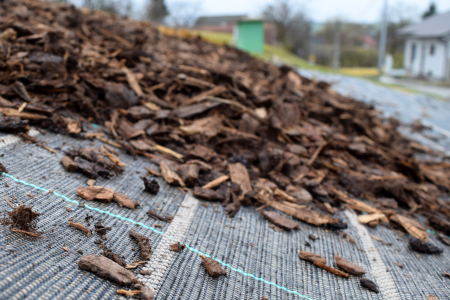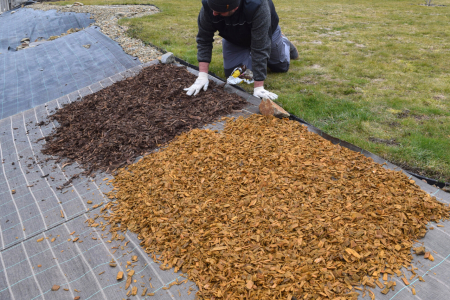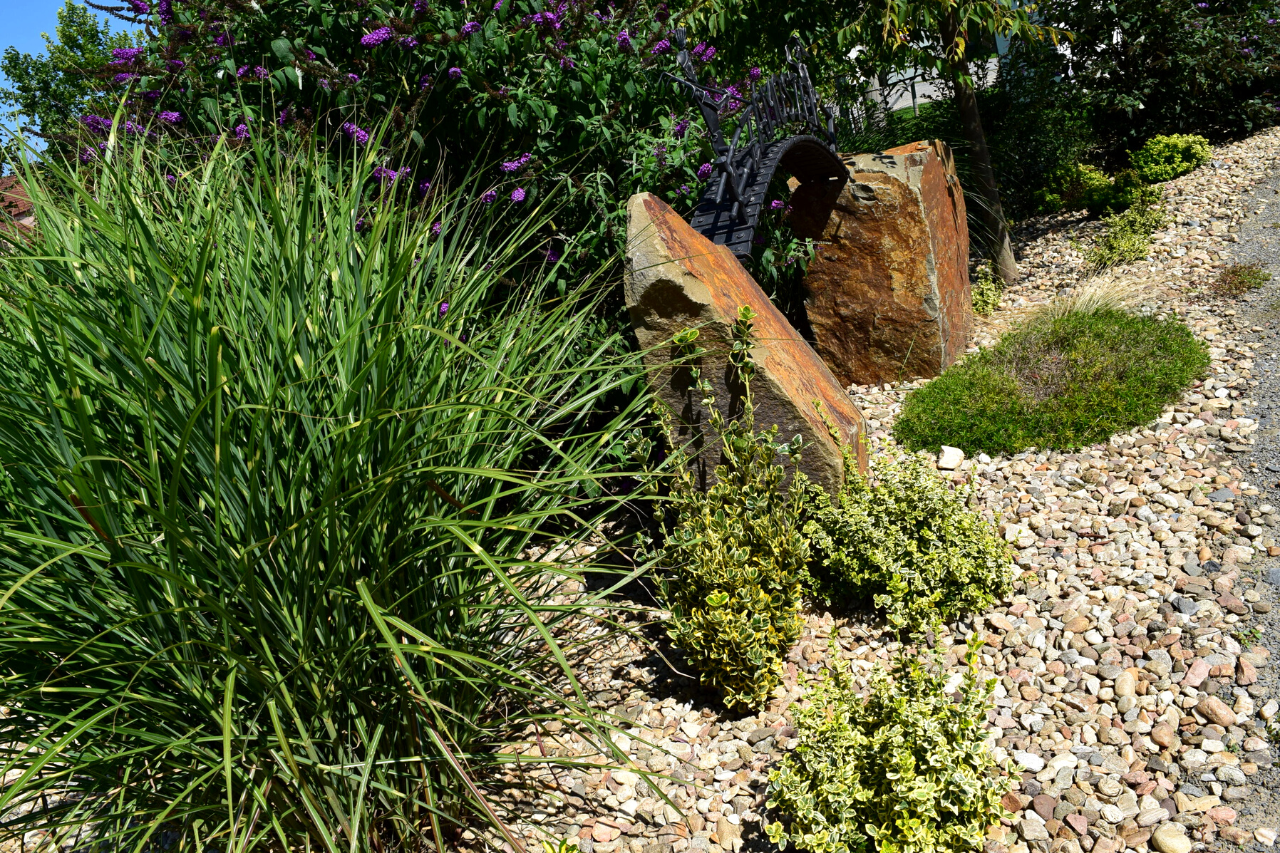
The Meaning of Mulching
Mulching means putting mulching material (= mulch) on the soil around plants. It could be organic (wood chips, straw, bark) or inorganic (landscape fabric, plastic or stone mulch).
Woven landscape fabric, used as a base layer for stone mulching.
Landscape Fabric for Mulching: Yes or No?
Various landscape fabrics are commonly used for mulching. They’re used as the base layer for other mulch types and also on their own.
1. Using Only Landscape Fabric
The most common example of using landscape fabric on its own would be as covers for strawberry fields. Landscape fabrics are usually not a joy to look at; that’s why people tend to use them without another mulching material in the more “agricultural” part of their garden.
2. Combining Landscape Fabric with Other Mulching Materials
This way is usually used in decorative gardens. Let’s have a look at its pros and cons.
Landscape Fabric for Mulching: Benefits
Stunning Weed-Free Flower Beds
There are only two things certain in life, they say. Death and taxes. Gardeners would add a third one — weeding. You can rely on weeds to cover every free inch of soil and still, it always grows back. More quickly than you can get some rest.
Beautiful weed-free flower beds require hours of manual work every week. Or, you can make the job easier by covering your beds with landscape fabric, then putting some other mulch material on top (like bark or stones). This won’t eliminate weed for good but it will slow it down, making it grow more sparsely.
Mulch Lasts Longer
If you put mulch directly on soil, it will get deeper in the ground over time. Without a mulch “base layer”, you have to refill your mulch once in a while. This costs time and money — decorative stones for flower beds aren’t exactly cheap.
Landscape fabric used as a mulch base layer creates a barrier between the mulch material and the soil. Another benefit of this technique is that mulch doesn’t get all muddy when it rains.
To sum up, putting landscape fabric below mulch is a good idea if you care about the longevity of your mulch.
Easier Garden Upgrade
If you’ve used landscape fabric under your mulch, it’s easier to put it away once you decide to switch from flowers to vegetable beds (or just grass). With a landscape fabric, you don’t have to pick mulch from the soil by hand.
Keeping Moisture In
Landscape fabric and mulch reduce the evaporation of water — making plants suffer less in hot weather.
Erosion Control
Mulch protects the soil against erosion caused by wind and water. This is important to consider, especially if your piece of land is up- or downhill — pick particular landscape fabric for sloped gardens.
Cons of Landscape Fabric
Higher Soil Temperature
Covering land with landscape fabric always raises the soil temperature — that’s a no-go zone for some plants. Warm soil is also the perfect rodent home — if you’re already at war with mice and other creatures, think twice before using landscape fabric.
If your land is rodent-free, feel free to use landscape fabric.
More Complicated Change of Crop
If you decide to turn a flower bed into a vegetable one, landscape fabric might make such a switch of crop more challenging. Older plants might have grown into the fabric, making its separation from the ground a demanding task.
Waste Management
Landscape fabric is usually made of plastic, but it doesn’t belong to bins for plastic as it contains organic matter. You can put smaller parts of landscape fabric into combined waste, but larger parts should be taken to specialised waste management facilities.
Landscape Fabric Under Mulching Bark
Bark is often used as mulch and it pairs really well with woven and nonwoven landscape fabrics.
Woven landscape fabrics are made of natural like jute or of man-made materials. As the name suggests, individual yarns are weaved to make the fabric.
Nonwoven fabrics are made of polypropylene — melted matter is sprayed onto a net, forming the fabric as it dries. Here’s more about the production process of nonwoven fabric.
Consider these 4 factors when choosing a nonwoven landscape fabric:
1. Unwinding
Nonwovens are a better choice if you plan to put plants in the landscape fabric. Making plant holes into nonwoven fabric is easy and the fabric doesn’t start unwinding on the edges.
2. Longevity
Woven landscape fabric made of natural material (typically jute) decomposes naturally in a few years. That’s why woven fabric is great when you want to grow plants on a slope which you don’t want to put mulch on: put woven jute fabric on the slope, then plant seedlings in it.
Landscape fabric serves as a support for young plants — they withstand wind and rain much better. In a few years, the seedlings are big enough to face the weather themselves, and their supporting landscape fabric decomposes on its own.
If you plan to put decorative mulch on the slope, choose man-made landscape fabric — it lasts much longer. We’ll get back to landscape fabrics for slopes later in this article.
3. Resilience
Man-made woven fabrics are more resilient than nonwovens. Its fabric weight is usually around 100 g/m2.
To compare — nonwoven landscape fabric is usually more lightweight (around 50 g/m2) which makes it more prone to damage. In other words, feel free to drive your garden tractor on woven landscape fabric but avoid driving it on nonwoven landscape fabric.
OUR TIP: How to choose fabric weight of nonwovens.
4. Price
Nonwoven landscape fabric is less expensive than woven.
Fixating Landscape Fabric
Landscape fabric needs to be attached to the ground — most often with metal or plastic pegs. The exception to the rule is putting mulching stone on the fabric — stones hold it in place by just their weight.
Plastic pegs (blue dots in the fabric) are used to keep landscape fabric in place.
Landscape Fabric for Slopes
When putting landscape fabric on sloped ground, choose special landscape fabric for hillsides. It’s made of woven plastic threads, interspersed with silk ones which are slightly higher than the rest of the fabric.
When putting mulching material on a hillside covered with landscape fabric for slopes, the silk threads in the fabric prevent the mulch from sliding down.
Slope landscape fabric makes mulching bark stay in place.
Landscape Fabric of All Types and Sizes
At Milmar, we manufacture both woven and nonwoven landscape fabrics, supplying our product mostly to garden centres and hobby markets.
We also make made-to-measure landscape fabric, adjusting its dimensions per customer’s request. Here’s our description of making customised nonwovens for our clients.
Apart from landscape fabric, we specialise in supplying nonwoven fabric and plastic mesh for Home&Garden. We’re flexible in delivery terms and conform to varying seasonal demand.
Get in touch — we’re here to help!
